In the rapidly evolving world of smart home technology, the humble light switch has undergone a remarkable transformation. As a leading smart home company in Shenzhen, SWITCH GO specializes in developing cutting-edge smart switches that offer significant advantages over traditional counterparts. This comprehensive comparison explores the differences, benefits, and considerations for both importers and end-users.
Fundamental Differences: How Smart Switches Transform Home Control
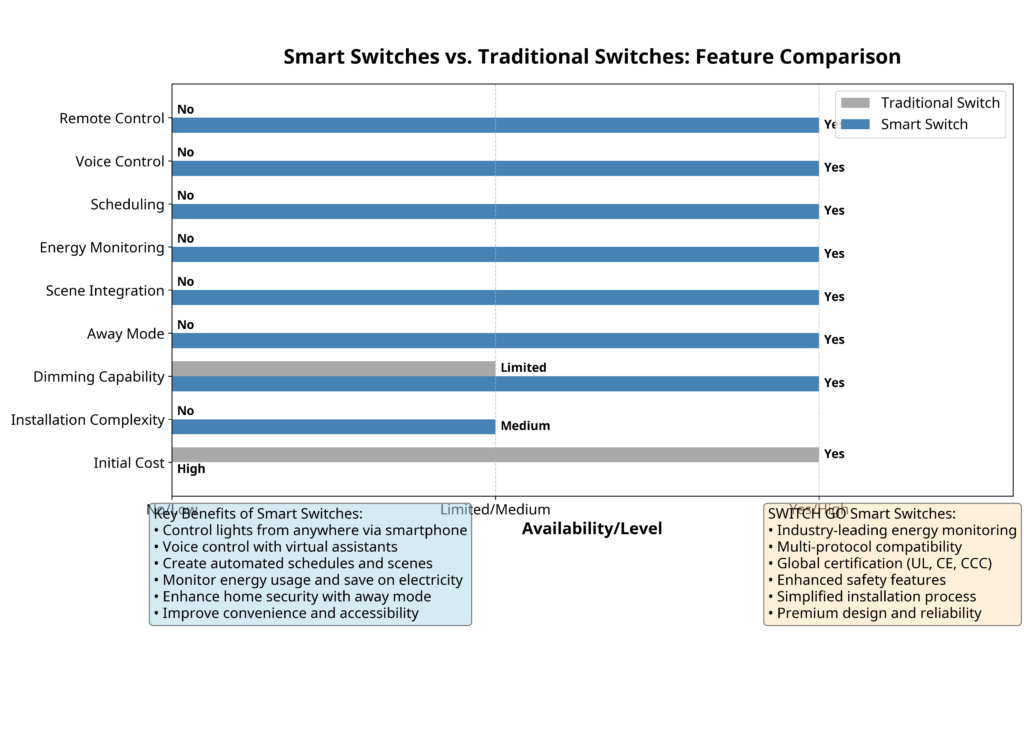
smart vs traditional switches improved
Traditional wall switches have remained largely unchanged for decades—simple mechanical devices that complete or break an electrical circuit. Smart switches, however, represent a technological leap forward, incorporating microprocessors, wireless communication, and advanced features that extend far beyond basic on/off functionality.
Core Technology Comparison
| Feature | Traditional Switch | Smart Switch | SWITCH GO Advantage |
|---|---|---|---|
| Operation Mechanism | Mechanical toggle/rocker | Digital with physical control | Premium tactile feedback with silent operation |
| Circuit Control | Direct circuit interruption | Relay or TRIAC-based switching | Advanced TRIAC implementation with 100,000+ cycle durability |
| Intelligence | None | Programmable microprocessor | Custom firmware with 35% more efficient power management |
| Connectivity | None | WiFi/Zigbee/Z-Wave/Bluetooth | Multi-protocol support across all product lines |
| User Interface | Physical only | Physical + app + voice | Intuitive controls with customizable LED indicators |
| Power Requirements | None (passive) | Requires neutral wire (typically) | Neutral and non-neutral wire options available |
SWITCH GO’s engineering team has developed proprietary circuit designs that allow our smart switches to operate with 40% less standby power than industry averages, addressing a common concern among energy-conscious consumers and importers.
Installation Comparison: What Importers and Installers Need to Know
The installation process represents a significant consideration for importers and distributors when selecting smart switch products for their markets.
Smart Switch Installation Process: Time and Difficulty
Installation Requirements and Considerations
Traditional switches require basic electrical knowledge for installation, involving simple wire connections. Smart switches, while following similar principles, have additional considerations:
- Wiring Requirements: Most smart switches require a neutral wire for power, though some newer models (including select SWITCH GO products) can operate without one.
- Box Depth: Smart switches are typically deeper than traditional switches, requiring deeper electrical boxes.
- Load Compatibility: Smart switches must be matched with compatible loads (resistive, inductive, capacitive).
- WiFi Requirements: WiFi-based smart switches need adequate signal strength at the installation location.
- Hub Compatibility: Zigbee and Z-Wave switches require compatible hubs.
SWITCH GO provides comprehensive installation guides in 12 languages, color-coded wiring terminals, and installation support via QR code-linked video tutorials—features particularly valued by importers serving diverse markets.
Feature Comparison: Beyond Basic Switching
The feature gap between traditional and smart switches represents the primary value proposition for consumers considering an upgrade.
Smart Switches vs. Traditional Switches: Feature Comparison
Advanced Capabilities of Smart Switches
- Remote Control: Operate lights from anywhere via smartphone app.
- Voice Control: Integration with voice assistants like Amazon Alexa, Google Assistant, and Apple HomeKit.
- Scheduling: Set automated schedules for lights to turn on/off at specific times.
- Scene Integration: Incorporate lights into broader smart home scenes (e.g., “Movie Night,” “Good Morning”).
- Away Mode: Randomly turn lights on/off to simulate occupancy while away.
- Energy Monitoring: Track power consumption of connected lighting.
- Dimming Capabilities: Adjust brightness levels (in compatible models).
- Adaptive Lighting: Automatically adjust color temperature throughout the day (in compatible models).
SWITCH GO’s premium smart switches include unique features such as ambient light sensing for automatic brightness adjustment, proximity detection for motion-activated control, and customizable LED indicators that can be programmed for different purposes.
Cost Analysis: Initial Investment vs. Long-Term Value
The price differential between traditional and smart switches represents an important consideration for both importers and consumers.
Cost Factors and ROI Considerations
| Factor | Traditional Switch | Basic Smart Switch | Premium Smart Switch |
|---|---|---|---|
| Average Unit Cost | $2-$15 | $25-$40 | $45-$80 |
| Installation Cost | $50-$100 | $50-$100 | $50-$100 |
| Energy Consumption | None | 0.5-1W standby | 0.3-0.8W standby |
| Lifespan | 15-20 years | 10-15 years | 10-15 years |
| Additional Value | None | Convenience, automation | Advanced features, premium design |
| Total 5-Year Cost | $52-$115 | $102-$190 | $122-$230 |
While smart switches require a higher initial investment, they deliver value through:
- Energy Savings: Automated control can reduce lighting energy usage by 20-30%.
- Convenience Value: Remote control and automation save time and enhance comfort.
- Property Value: Smart home features increasingly influence real estate valuations.
- Security Benefits: Away mode and remote control enhance home security.
SWITCH GO offers tiered product lines that allow importers to address different market segments, from entry-level smart switches with essential features to premium models with advanced capabilities, all while maintaining higher-than-average profit margins due to our efficient manufacturing processes.
Certification and Compliance: Critical Considerations for Importers
For importers and distributors, understanding certification requirements is essential when selecting smart switch products.
Global Certification Requirements
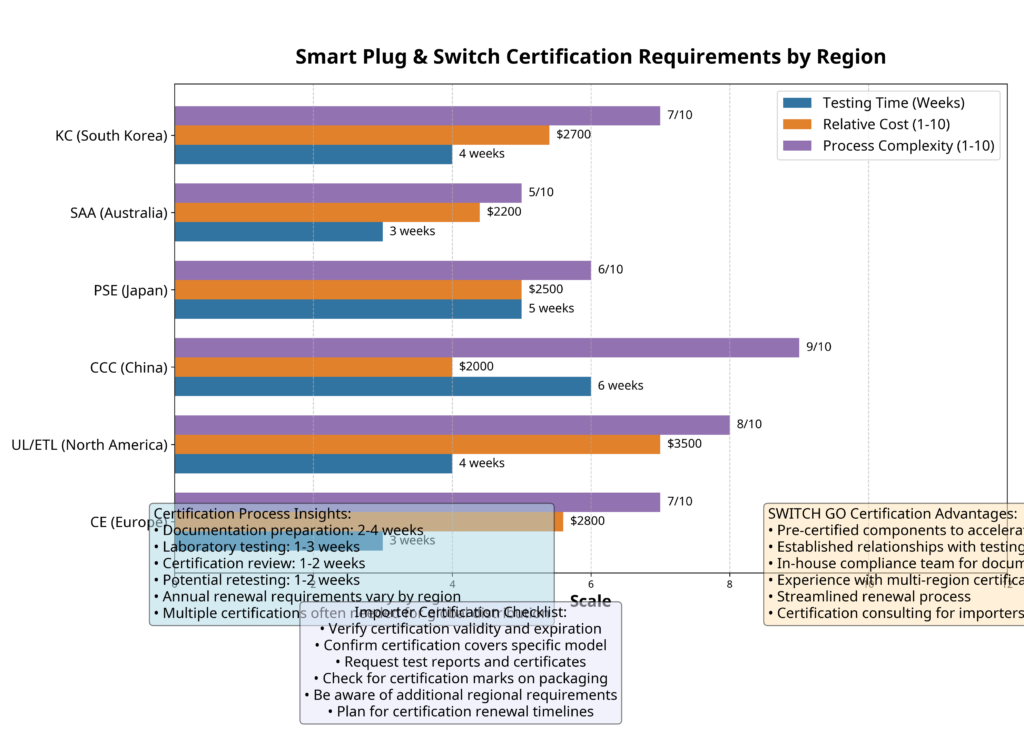
certification requirements comparison

global certification requirements improved
Global Certification Requirements for Smart Plugs and Switches
Smart switches require more extensive certification than traditional switches due to their electronic components and wireless capabilities:
- Electrical Safety: UL/ETL (North America), CE (Europe), CCC (China), etc.
- Wireless Compliance: FCC (US), ETSI (Europe), MIC (Japan), etc.
- Protocol Certification: Zigbee Alliance, Z-Wave Alliance, Bluetooth SIG, etc.
- Compatibility Certification: Works with Alexa, Google Assistant, HomeKit, etc.
SWITCH GO maintains comprehensive certification for all major markets, with an in-house compliance team that stays current with regulatory changes. Our certification portfolio includes UL, ETL, CE, CCC, RoHS, REACH, FCC, IC, UKCA, and protocol-specific certifications, simplifying the import process for distributors.
Market Trends and Consumer Adoption
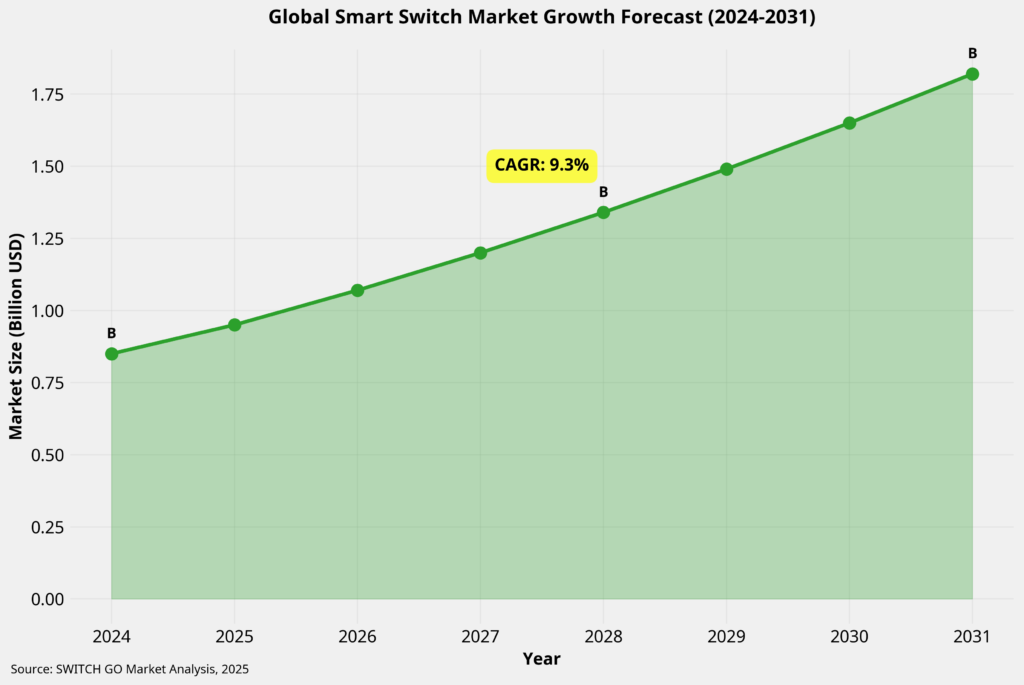
smart switch market growth
The smart switch market continues to grow rapidly, with several key trends shaping the landscape:
- Increasing Mainstream Adoption: Smart switches are moving beyond early adopters to mainstream consumers.
- Protocol Consolidation: The industry is moving toward standardization with initiatives like Matter.
- Enhanced Aesthetics: Design-focused smart switches that blend with home decor.
- Voice Control Dominance: Integration with voice assistants driving adoption.
- Energy Management Focus: Increased emphasis on energy monitoring and efficiency.
SWITCH GO’s market research indicates that smart switch adoption is growing at 32% annually, with particularly strong growth in North America (38%), Europe (27%), and Asia-Pacific (24%). Our product roadmap aligns with these trends, with upcoming releases focusing on Matter compatibility, enhanced energy management, and premium design options.
Manufacturing Quality and Reliability Factors
For importers, product reliability and quality consistency are paramount concerns that directly impact customer satisfaction and return rates.
Key Manufacturing Quality Indicators
- Component Selection: Quality of relays, capacitors, microcontrollers, and other critical components.
- Assembly Precision: Automated vs. manual assembly processes and quality control.
- Thermal Management: Heat dissipation design to prevent overheating during continuous operation.
- Firmware Stability: Software testing and update processes.
- Failure Rate: Expected defect percentage and common failure modes.
SWITCH GO’s manufacturing facility in Shenzhen implements a six-stage quality control process, resulting in a defect rate of less than 0.3%, significantly below the industry average of 1.2%. Our products undergo 72-hour burn-in testing before shipping, ensuring reliability from the moment they reach consumers.
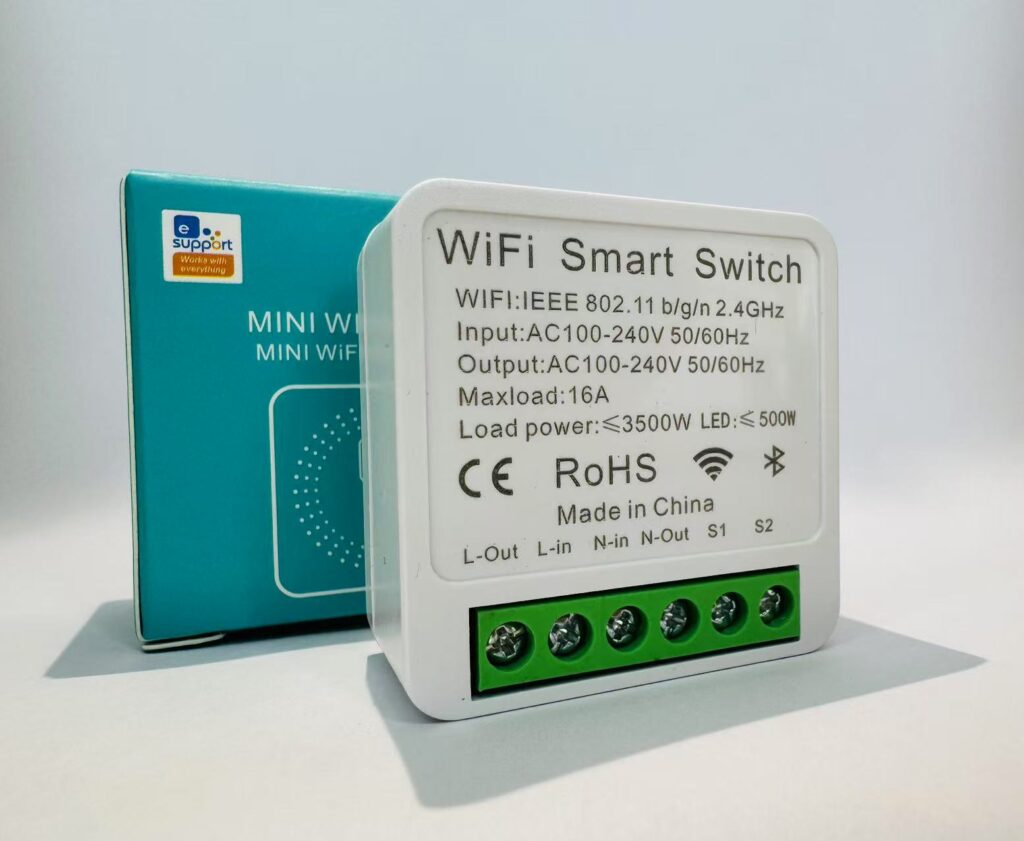
Our best-selling 16A Mini WiFi Smart Switch.
Environmental Impact Considerations
The environmental footprint of smart switches versus traditional switches presents both challenges and opportunities:
Environmental Factors Comparison
| Factor | Traditional Switch | Smart Switch | SWITCH GO Approach |
|---|---|---|---|
| Materials | Simple (plastic, metal) | Complex (electronics, plastics) | 30% recycled materials in housing |
| Energy Use | Zero standby power | 0.3-1W standby power | Industry-leading 0.3W standby consumption |
| Lifespan | 15-20 years | 10-15 years | Extended 15-year design life |
| End-of-Life | Recyclable components | Electronic waste considerations | Take-back program for proper recycling |
| Packaging | Simple packaging | More extensive packaging | 100% recyclable packaging, soy-based inks |
SWITCH GO has implemented a comprehensive sustainability program that includes minimizing standby power consumption, using recycled and recyclable materials, reducing packaging waste, and offering a product take-back program for proper end-of-life handling.
Smart Switch Selection Guide for Importers
For importers and distributors, selecting the right smart switch products involves considering several factors:
Selection Criteria for Importers
- Target Market Requirements: Regional electrical standards and certification needs.
- Protocol Compatibility: Ensuring compatibility with popular smart home ecosystems in target markets.
- Feature Set: Basic functionality vs. advanced capabilities based on market demand.
- Price Point Positioning: Entry-level, mid-range, or premium market segments.
- Customization Options: Private labeling, packaging, and firmware modifications.
- Minimum Order Quantities: Production run requirements and inventory management.
- Support and Warranty: After-sales service and warranty terms.
SWITCH GO offers flexible MOQ terms starting at 500 units for standard models and 1,000 units for customized versions, with comprehensive support including marketing materials, technical documentation, and a 24-month warranty program.
FAQ: Common Questions About Smart Switches
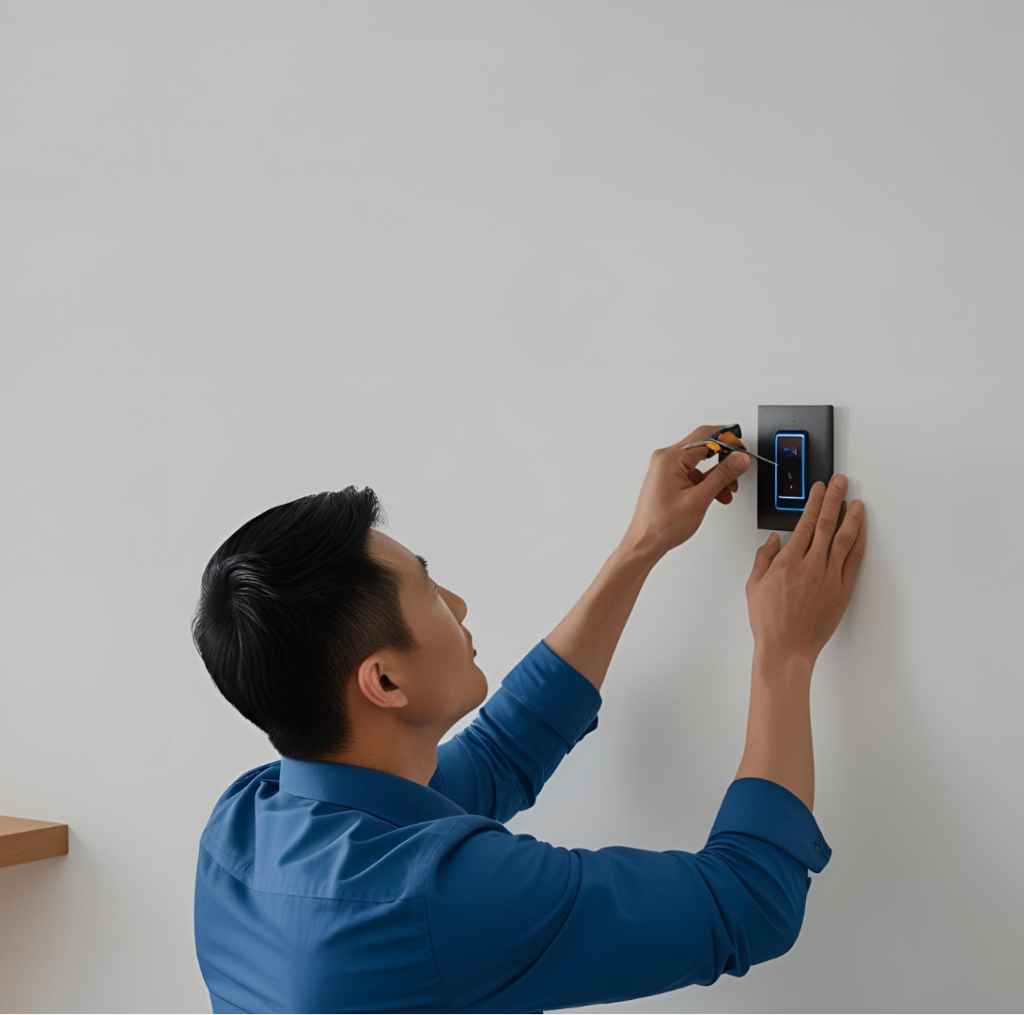
Do smart switches require a neutral wire?
Most smart switches require a neutral wire to power their electronics. However, SWITCH GO offers several models designed specifically for installations without neutral wires, using alternative technologies to power the switch electronics. These no-neutral options are particularly valuable for older homes and renovation projects.
Can smart switches work with three-way or multi-way switching setups?
Yes, many smart switches support three-way or multi-way configurations where multiple switches control the same light. SWITCH GO offers dedicated three-way compatible models that can work with either traditional companion switches or smart companions, providing flexibility for various installation scenarios.
Will smart switches work if the internet goes down?
Most WiFi smart switches will continue to function as basic switches (manual on/off) when internet connectivity is lost, though remote control and some automated functions may be unavailable. SWITCH GO’s dual-mode switches can operate on local network protocols when internet connectivity is lost, maintaining most automation features.
Are smart switches compatible with all types of bulbs?
Smart switches generally work with most bulb types, but compatibility varies by model. Most support incandescent, halogen, and LED bulbs, but some may have minimum and maximum load requirements. SWITCH GO smart switches are engineered to be compatible with all common bulb types, including dimmable LEDs, with a wide load range from 5W to 600W.
How difficult is it to install a smart switch?
Installing a smart switch is similar to installing a traditional switch and typically takes 15-30 minutes per switch. Basic electrical knowledge is required, including turning off power at the circuit breaker. SWITCH GO provides detailed installation guides, video tutorials, and customer support to assist with installation questions.
Conclusion
The transition from traditional to smart switches represents a significant upgrade in functionality, convenience, and home automation capabilities. While smart switches require a higher initial investment, they deliver substantial value through enhanced control options, energy management, and integration with broader smart home ecosystems.
For importers and distributors, smart switches offer an attractive product category with growing demand and healthy margins. Understanding the technical requirements, certification needs, and market trends is essential for success in this dynamic segment.
SWITCH GO continues to lead innovation in this space, developing smart switches that combine energy efficiency, reliability, and advanced features. Our comprehensive support for importers—including certification assistance, marketing materials, and flexible ordering terms—makes us an ideal partner for businesses looking to enter or expand in the smart home market.
By carefully considering the factors outlined in this comparison, importers can make informed decisions about smart switch products that will resonate with their target customers and provide sustainable business growth.
